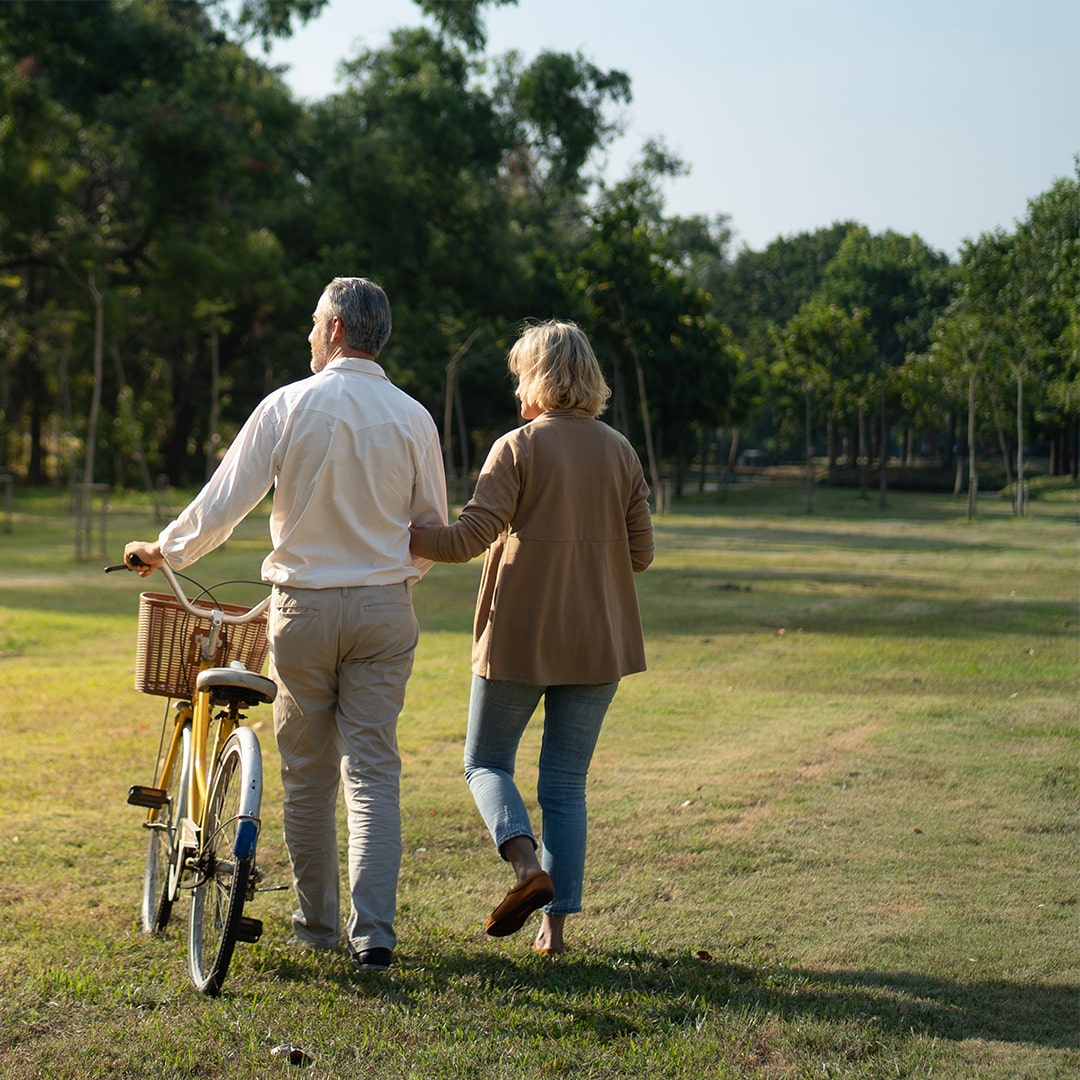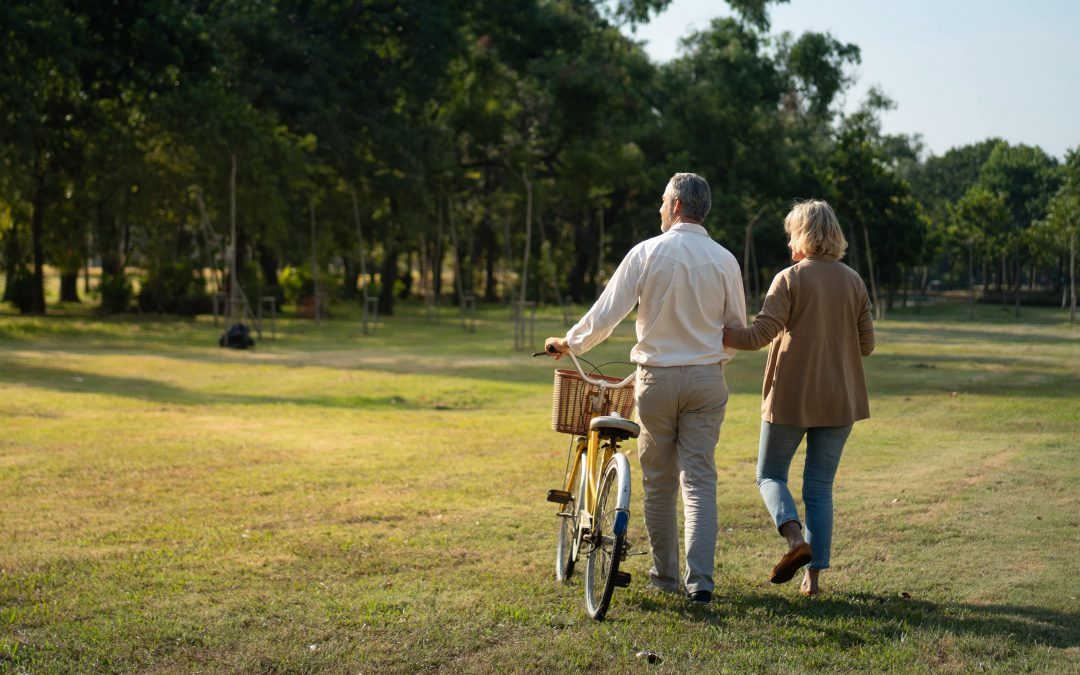How’s your body feeling today? Some days are better than others, we know. The pain and achiness you sometimes feel in your joints doesn’t have to be an inevitable part of getting older. Introduce proper mobility into your routine and you’ll be moving more freely without that pesky pain.
What does mobility mean?
What exactly is mobility? Is it yoga, or Pilates? It is as simple as a few easy stretches when you wake up? No – mobility is a term used by physiotherapists to describe intentionally moving your joints through their full range of motion. Mobility gently works the muscles which stabilise your joints, too. The result should be less pain and more movement as you do every day things like sitting, standing, bending, lifting, and carrying. And if you’re enjoy exercise or do sport, it’ll help there too!
How important is mobility as you get older?
Getting older does not have to mean giving in to aches, pains, and stiffness. Whilst our bodies inevitably change with time, the idea of becoming a little old lady (or man!) is a myth you are welcome to banish!
Mobility exercises are important for everyone, regardless of age or activity levels. But it’s true that mobility becomes even more useful as we get beyond our 50s. Why? As our bodies age, some natural processes slow down. And this affects things like tissue elasticity, strength, and regeneration. We’re talking about collagen production, muscle elasticity, and loss of the lubricating fluid in your joints.
Then of course there are specific conditions which can cause pain and stiffness in certain joints. Osteoarthritis, where the cartilage in the joints breaks down, and rheumatoid arthritis (inflammation of the joints) are two pretty common ones.
Whether you’ve spent the last few decades playing tennis and biking 50 miles every Sunday, or sat at a desk building your business, your body will get less mobile with age. The good news is there’s plenty you can do about it!
Physical activity actually improves joint pain and stiffness by keeping the joints moving and reducing the amount of shrinkage to cartilage.
Which joints need the most attention?
If you’ve already got joint pain, you won’t need us to point it out! But it’s useful to know which joints are most prone to age-related stiffness. It’s common sense really. Focus your mobility exercises on the joints that get the most use in day-to-day life and those which bear the greatest load. We’re talking knees, hips, lower back, neck, shoulders, and even your big toes and thumb joints.
Top mobility exercises for knees
Try doing these mobility exercises for your knee joints. Aim for 8-10 repetitions (each leg) and go round the circuit a second time if that felt OK.
1) Sit in a chair with both feet flat on the floor. Straighten your left leg and hold for 3 seconds. Lower it back down and repeat with your right leg.
2) Stand behind the chair and hold on to it for balance. Stand on one leg and bend the other leg at the knee (aiming to bring your foot to your bum). Lower the foot to the floor and repeat on the other leg.
3) Hold on to the back of that chair again and squat down until your knee is covering your toe from your line of sight. Stand up gently (no bouncing at the top).
4) Perform step ups on a low, stable surface (the bottom step of your stairs is fine). Step up with one foot then the other, then step back down with one foot then the other. Alternate the leading foot so both knees get equal mobility work.
5) Stand on the first step of your staircase with both feet. Have your heels slightly off the step. Raise and lower your heels by lifting up on to your toes.
Top mobility exercises for hips
These gentle hip exercises will loosen tight joints and build strength in the important muscles that surround and support your entire hip area. Do 10-12 of each one (both sides) and repeat the list 2-3 times if you can.
1) Stand with your feet hip width, and lift your left leg slightly out to the side keeping it straight. Move the leg in small controlled circles backwards and then forwards. Repeat on the right leg.
2) Lie on the floor on your side. Have your knees bent and stacked on each other. Your lower arm can support you on the floor. Rotate your top leg at the hip so your knees open like a clamshell (the name of this exercise!) It might help to put your top hand on that hip so you can feel the movement. Repeat on the other side.
3) Lie on your back with knees bent and feet on the floor. Pull one knee into your chest and gently rock the knee from side to side to loosen the hip joint. Do this for up to 30 seconds each side.
4) Sit on the floor with your feet together (soles touching) and knees falling away to the sides. Gently pulse your knees towards the ground. Don’t force your range of movement.
5) Sit on a chair with both feet on the ground. Lift and lower each leg a few inches, almost like marching. Keep the movement small and controlled.

Top mobility exercises for lower back and neck
The lower back is a complex area with lots of different bones, muscles, and joints. These three exercises will gently take your back and pelvis through different ranges of movement so you get relief from stiffness.
1) Get into a tabletop position on the floor with hands under shoulders and knees under hips. Gently pull your stomach in and round your back, dropping your chin to your chest. Then reverse this movement, dropping your belly and lifting your head and bum up. Repeat this “cat/cow” yoga movement to free up your back.
2) Lie on your back on the floor and pull both knees into the chest. Hold this or gently rock back and forth or from side to side.
3) Lie on the floor with your right leg out straight and left arm out to the side (in a T shape). Take your left leg over to the right with a bent knee and take your gaze over to the left. You should feel a gentle spinal twist. Hold this for 10-20 seconds and repeat on the other side.
Top mobility exercises for shoulders
The shoulder is the most complex joint in the body – and it’s a ball and socket joint, which means you’ll need to move it through various planes to feel the most benefit.
1) Shoulder rolls. Sitting or standing, simply roll your shoulders up, back, down, and around. Really exaggerate the movements. Then take the roll the other way. Doesn’t that feel better already?
2) Clasp your hands behind your back, or use a towel if you can’t reach. Gently raise your hands a little to feel the stretch across the front of your shoulders.
3) Take your right arm across the front of your body and gently press it into your chest with the back of your left arm. Repeat this on the other arm.
Top mobility exercises for toes and fingers
Painful toe and finger joints can make life miserable. But with a little bit of love these joints will soon feel a lot freer.
1) Take your shoes off and stand with feet together. Raise the heel of your right foot so your left leg is taking more of the weight. Roll through the joints of the right toes by gently bending the left leg. Repeat on the other side.
2) Get a golf ball and slowly roll it around the big pad of muscle under your big toe. You can do this standing or seated. Control the pressure and pay more attention to tight areas.
3) Stretch your thumb away from your other fingers by splaying your hands as much as you can. Then bend your thumb across your palm. Hold each position for 5-10 seconds.
What other types of exercise can help you stay mobile?
These exercises are a great way to free up your joints and keep them mobile. But there’s so much more you can do to ward off age-related aches and pains. One of the best ways is simply to stay active. As the saying goes, use it or lose it. This is certainly true for tissue elasticity.
If you enjoy formal exercise or sport, keep it up. If you need to dial it down a notch or switch from 5-a-side to walking football, so be it. The important thing is that you keep moving.
And if you’ve never been a fan of exercise? Your body doesn’t know the difference. Just stay active. This might mean walking the dog, gardening, or keeping up with the grandchildren. The aim is to keep moving.
Top 5 tips on moving for mobility
1) Walk as often as you can.
2) Make home mobility exercises part of your day.
3) Pay attention to your posture.
4) Try yoga, tai chi, or Pilates.
5) Mobility doesn’t have to take long – even 60 seconds a few times a day counts!




